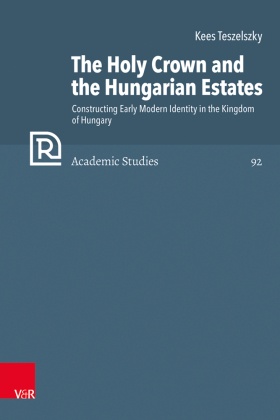
The Holy Crown and the Hungarian Estates - Constructing Early Modern Identity in the Kingdom of Hungary
| Verlag | Vandenhoeck & Ruprecht |
| Auflage | 2023 |
| Seiten | 396 |
| Format | 17,1 x 3,1 x 23,5 cm |
| Gewicht | 769 g |
| Artikeltyp | Englisches Buch |
| Reihe | Refo500 Academic Studies (R5AS) Band 092 |
| ISBN-10 | 3525573448 |
| EAN | 9783525573440 |
| Bestell-Nr | 52557344A |
Starting point of this work is that the "medieval doctrine of the holy crown" is a modern invention. Kees Teszelszky's research concentrates on the relation between the change in the meaning of this crown and the construction of an early modern national identity between 1572 and 1665. King Saint Stephen's medieval kingdom was divided into three territories. Although the crowns in the rest of Europe lost their significance for the legitimation of the ruler, the holy crown of Hungary gained a new sacral meaning as the unifying symbol of the divided kingdom, the authority of the Habsburg ruler and the unity of the Hungarian estates.
How became a medieval crown a sacral object in use for modern nationalism?
This book is about one of the most important elements of the political narratives in the history of Hungary in past and present: the Holy Crown of Hungary. This object is one of the most widely used symbols of modern Hungarian nationalism in our times and has been in use for ages in political culture. Surprisingly less is known how the meaning of the crown has changed over the centuries and how this influenced the development of national identity in the early modern period.Starting point is that the "medieval doctrine of the holy crown" is a modern invention. Teszelszky's research concentrates on the relation between the change in the meaning of this crown and the construction of an early modern national identity between 1572 and 1665. Using a constructivist method of research the author shows how the Habsburg ruler and the Hungarian estates legitimised their political program through an image of the crown and the Hungarian political community. In a short period between the end of 1604 and 1613 during a rebellion in Hungary, a war with the Ottomans and a strive between Emperor Rudolf II and his brother Archduke Matthias, the medieval tradition of the holy crown was revived and redeveloped by Hungarian and foreign historiographers into an ideology which is still present today.
